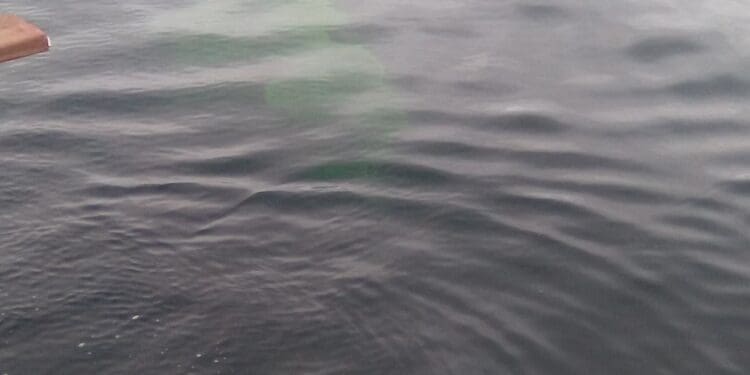Went to Tenakee with Larry and his friend, Pastor Gordon Blue, and a couple people heading to Tenakee, along with a load of freight. Lumpy run down Chatham, and really lumpy across the mouth of Freshwater Bay as the tide was stacking up against the wind. Once we turned into Tenakee Inlet, it was flat calm all the way to town. We saw the usual group of sea lions lounging on their haulout.
We offloaded quickly with our extra help. Gordon was a career crab fisherman before a pastor, so was a great help. We picked up a short term deckhand from the crane dock, and took him with us to help Nick and Molly load their table saw at their beach to send it to their friend in Juneau.
He was a fun 30 something to talk to. He’s met his wife in Idaho, she visited his family in Tenakee, and said “let’s move here!”. So they did. The kid said he was doing odd jobs around town, which I think can be a full time job in this town of retirees and continuous construction, remodel, appliance repair, commercial fishing, and firewood cutting. When I asked what his dad did, it sounded like the same thing. And his dad was a Toyo stove fixer, which is always in demand. I thought how refreshing it was to meet someone (and apparently his father) just living sort of in the moment, and not on some career path or corporate ladder or professional job with a mortgage. Remote, community life as in much of Alaska’s rural communities without a road system. A lot different perspective that those of us in larger towns with soccer practice and Costco and running around all the time. Every passenger we take to or from Tenakee seems to have their own unique story.
I did all the driving and maneuvering this trip. Earlier, Larry would do the close up work around the docks, and I’d take over for the open water driving. I’m finally getting the hang of twin jets with Larry’s coaching. The main thing to remember is whether you are going forward or reverse, turn the wheel in the direction you want the bow to go. When maneuvering, you generally put the boat in gear, at an idle, and then use the forward and reverse levers on the jets to move to the moorage. Larry picked it up a lot faster than I did, and now he’s getting me there.
The way home was a lot better seas. We made it back in half the time as the trip down, as we had a lighter load and ran on step the whole way. Still not many boats out this time of year, and I saw one humpback whale heading north near the Kittens Islands at Funter Bay.

